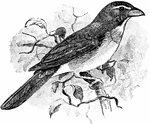
Brown Pelican and Sea Gull
An illustration of a brown pelican with a fish in it's mouth and a sea gull resting on his back. The…
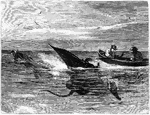
Manta Ray
The manta ray (Manta birostris), is the largest of the rays, with the largest known specimen having…
![Catherine II, called Catherine the Great, reigned as Empress of Russia for 34 years, from 9 July [O.S. 28 June] 1762 until her death. Marrying into the Russian Imperial family, she came to power with the deposition of her husband Peter III and then presided over a significant period of growth in Russian influence and culture. She exemplified the enlightened despot of her era.](https://etc.usf.edu/clipart/55800/55855/55855_catherine-ii_mth.gif)
Catherine II of Russia
Catherine II, called Catherine the Great, reigned as Empress of Russia for 34 years, from 9 July [O.S.…

Bishop Reginald Heber
Having taken holy orders in 1807, he took up the family living of Hodnet in Shropshire. In 1809 he married…

Stick Insect
The Phasmatodea (sometimes called Plasmodia) are an order of insects, whose members are variously known…

Ichneumon Fly
The Ichneumonoidea are insects classified in the hymenopteran suborder Apocrita. The super family is…
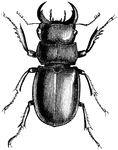
Longhorn Beetle
The longhorn beetles (Cerambycidae; also known as long-horned beetles or, more archaically, llongicorns)…

Partown Prawn
Parktown prawn is the familiar term South Africans use for Libanasidus vittatus, a monotypic king cricket…

Calabash Tree
An illustration of a Calabash tree and ways to utilize the shell of the fruit it produces. Crescentia…
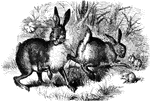
Rabbits
Rabbits are small mammals in the family Leporidae of the order Lagomorpha, found in several parts of…
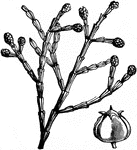
Sandarac Tree
Callitris quadrivalvis (or Tetraclinis articulata) is a coniferous tree in the cypress family known…
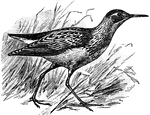
Pectoral Sandpiper
The pectoral sandpiper, Calidris melanotos (or Actodromas maculata) is a small wading bird of the Scolopacidae…

Ground Beetle
Ground beetles or carabids are collective terms for the beetle family Carabidae. This is a large family,…

Weevil
A weevil is any beetle from the Curculionoidea superfamily. They are usually small, less than 6 mm (¼…
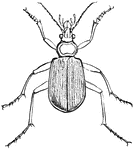
Predaceous Beetle
Predaceous diving beetles is a family of water beetles. They are about 25 mm (one inch) long on average,…

Predaceous Beetle
Predaceous diving beetles is a family of water beetles. They are about 25 mm (one inch) long on average,…
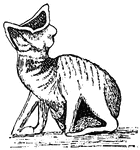
Cedar Waxwing Hatchling
The Cedar Waxwing (Bombycilla cedrorum) is a member of the family Bombycillidae or waxwing family of…
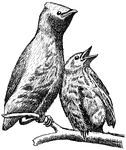
Cedar Waxwing (3 Weeks)
The Cedar Waxwing (Bombycilla cedrorum) is a member of the family Bombycillidae or waxwing family of…
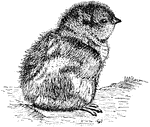
Young Grouse
Grouse are a group of birds from the order Galliformes. Often considered a family Tetraonidae, the American…
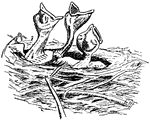
Young American Robins
The American Robin, Turdus migratorius, is a migratory songbird of the thrush family. It is named after…
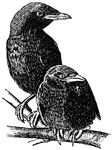
Crows
The true crows are large passerine birds that comprise the genus Corvus in the family Corvidae. Ranging…

Chipping Sparrow Feeding Young
An illustration of a chipping sparrow feeding its young. The Chipping Sparrow (Spizella passerina) is…

Cricket
Crickets, family Gryllidae (also known as "true crickets"), are insects somewhat related to grasshoppers…
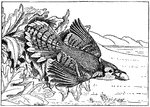
Blue Jay
The Blue Jay (Cyanocitta cristata) is a passerine bird, and a member of the family Corvidae native to…
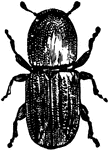
Bark Beetle
A bark beetle is one of approximately 220 genera with 6,000 species of beetles in the subfamily Scolytinae.…

Woodpecker
The woodpeckers, piculets and wrynecks are a family, Picidae, of near-passerine birds . Members of this…

Cecropia Moth
The cecropia moth is one of the largest moths found in North America. It is a member of the Saturniidae…
Larva of Cecropia Moth
An illustration of the larva of a ceropia moth. The cecropia moth is one of the largest moths found…

White-marked Tussock Caterpillar
Orgyia leucostigma, the White-marked tussock moth, is a moth in the family Lymantriidae. The caterpillar…
Brown-tail Moth Web
The Brown-tail (Euproctis chrysorrhoea) is a moth of the family Lymantriidae. It is distributed throughout…
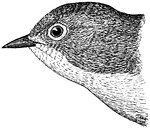
Nashville Warbler
The Nashville Warbler, Vermivora ruficapilla, is a small songbird in the New World warbler family. They…

Tit Bird
The tits, chickadees, and titmice comprise Paridae, a large family of small passerine birds which occur…

White-breasted Nuthatch
The White-breasted Nuthatch (Sitta carolinensis) is a small songbird of the nuthatch family which breeds…
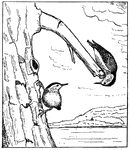
Nuthatches
The nuthatches are a genus, Sitta, of small passerine birds belonging to the family Sittidae. Characterised…

Brown Creeper
The Brown Creeper (Certhia americana), also known as the American Tree Creeper, is a small songbird,…

Brown Thrasher
The Brown Thrasher (Toxostoma rufum) is a species of thrasher, part of a family of New World birds (Mimidae)…
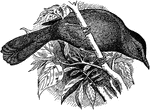
Gray Catbird
The Grey Catbird (Dumetella carolinensis) is a medium-sized northern American perching bird of the mimid…
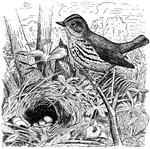
Ovenbird
The Ovenbird, Seiurus aurocapillus, is a small songbird of the New World warbler family. Ovenbirds are…
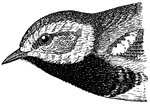
Black-throated Green Warbler
The Black-throated Green Warbler, Dendroica virens, is a small songbird of the New World warbler family.…
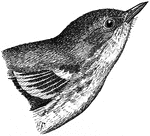
Pine Warbler
The Pine Warbler, Dendroica pinus, is a small songbird of the New World warbler family. These birds…
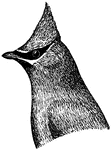
Cedar Waxwing
The Cedar Waxwing (Bombycilla cedrorum) is a member of the family Bombycillidae or waxwing family of…

Rose-breasted Grosbeak (Male)
The Rose-breasted Grosbeak, Pheucticus ludovicianus, is a large seed-eating bird in the cardinal family.…

Rose-breasted Grosbeak (Female)
The Rose-breasted Grosbeak, Pheucticus ludovicianus, is a large seed-eating bird in the cardinal family.…
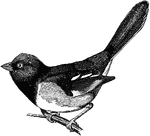
Towhee (Male)
A Towhee is any one of a number of species of birds in the genus Pipilo within the family Emberizidae…

American Goldfinch
The American Goldfinch (Carduelis tristis), also known as the Eastern Goldfinch and Wild Canary, is…
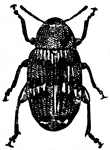
Pea Weevil
The pea weevils or seed beetles are a subfamily (Bruchinae) of beetles, now placed in the family Chrysomelidae,…
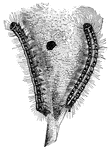
Tent Caterpillars
Tent caterpillars are moderately sized species in the genus Malacosoma in the moth family Lasiocampidae.…
Tent Caterpillar Eggs
An illustration of tent caterpillar eggs. Tent caterpillars are moderately sized species in the genus…

Tent Caterpillar Cocoon
An illustration of a tent caterpillar cacoon. Tent caterpillars are moderately sized species in the…

Click Beetle
The family Elateridae is commony called click beetles (or "typical click beetles" to distinguish them…

Gypsy Moth
The gypsy moth, Lymantria dispar, is a moth in the family Lymantriidae of Eurasian origin. Originally…

Tortricidae
Tortricidae is a family of moths in the order Lepidoptera. They are commonly known as tortrix moths.…
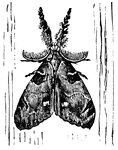
Tussock Moth
Tussock Moths, Lymantriidae or Liparidae, are a family of moths with about 350 known genera and over…
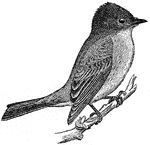
Phoebe
The genus Sayornis is a small group of medium-sized insect-eating birds in the Tyrant flycatcher family…


